Dates: January 20-24, 2023
Venue: Auro University, Surat
Dr. Beloo Mehra Director, BhāratShakti, Sri Aurobindo Society was invited by Sri Aurobindo Integral Life Center at Auro University, Surat, to display the exhibition on the topic – ‘Sri Aurobindo and India’s Freedom’ at the university campus.
The exhibition was conceived, researched and designed by Dr. Mehra. Prior to Auro University, it has been exhibited at several venues including Raj Nivas in Puducherry, Pondicherry University, National Seminar on Sri Aurobindo’s Nationalism at Sri Aurobindo Society, National Seminar on The Renaissance in India and Sri Aurobindo’s Nationalism in Bengaluru, Karnataka, and also a virtual exhibition at Central University of Tamil Nadu.
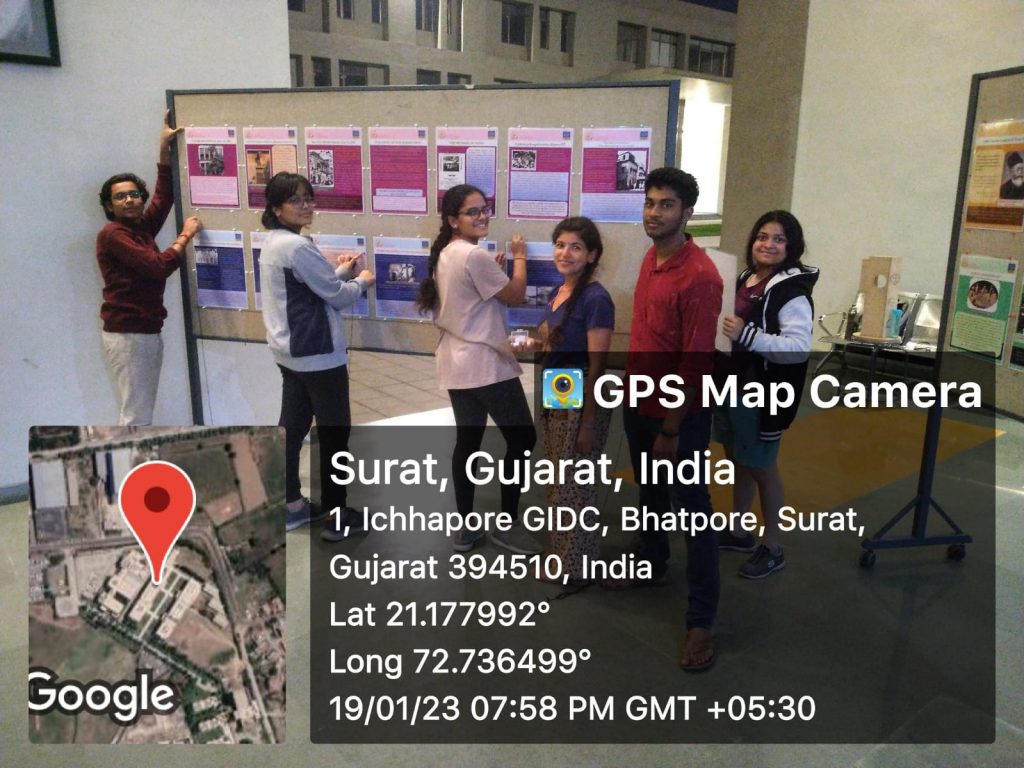
The 5-day-long exhibition from January 20 to January 24, 2023 was displayed outside the Discovery Hall of the Auro University campus which was also the venue for the National Seminar on NEP 2020 organised by Auro University. This allowed about 200 teachers, principals from various schools and colleges in the Surat area to view the exhibition.
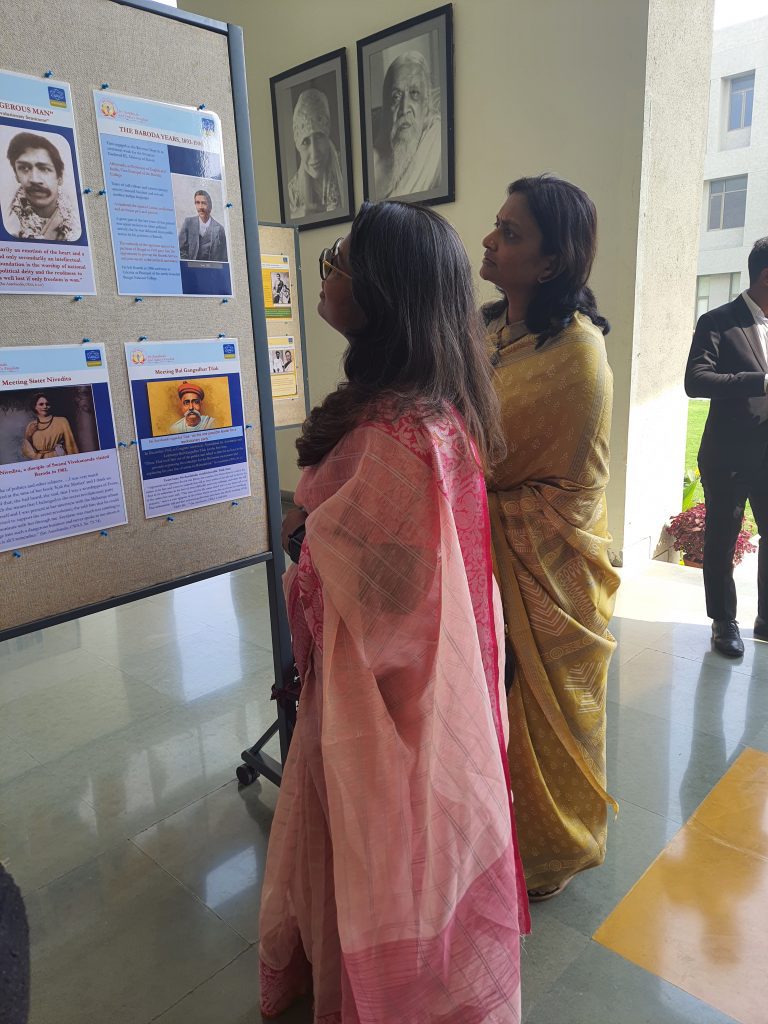
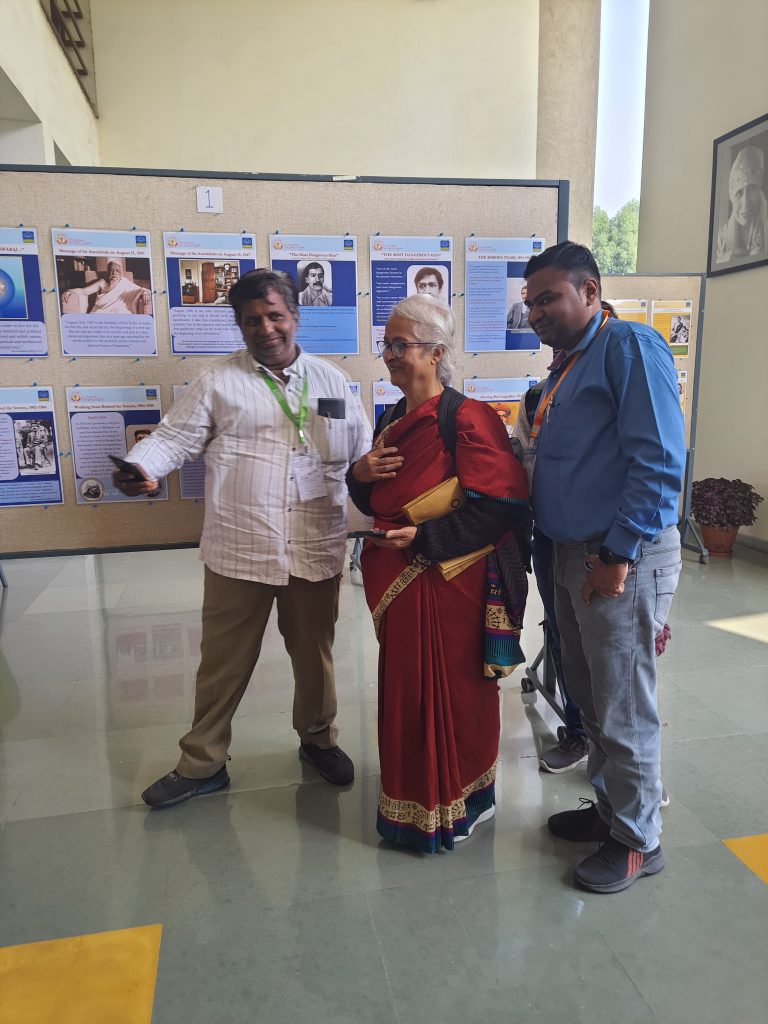
On January 24, 2023, a special session was organised during which Dr. Beloo Mehra presented an overview of the exhibition to a small group of students and faculty at Auro University. Dr. Mehra started off by requesting everyone present to practice a silent concentration for a few moments and invoke the Divine Presence.
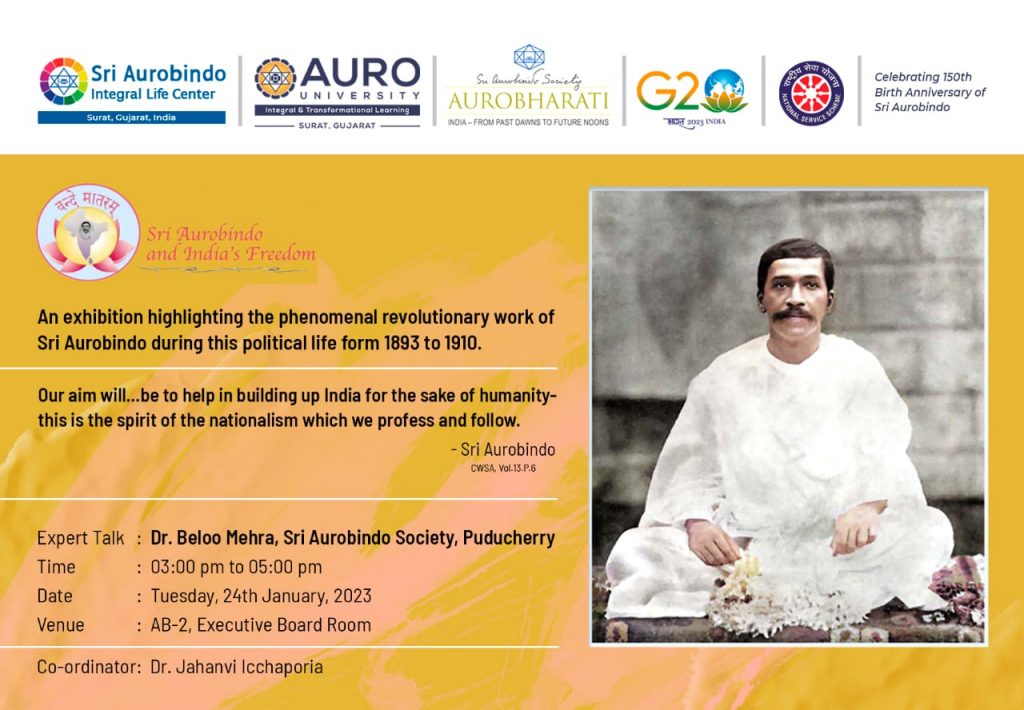
Inspired by the third principle of true teaching that Sri Aurobindo has given – ‘From Near to Far’, Dr. Mehra asked the participants to demonstrate by a show of hand how many of them were born and raised in Gujarat, and how many in Surat, specifically. This exercise showed that even in a university classroom in Surat where majority of audience members are natives of Surat and hail from Gujarat, almost all were unfamiliar with the important work Sri Aurobindo did in Gujarat and also about the significance of Surat in the Indian freedom movement.
Using this data, Dr. Mehra then began narrating the story of Sri Aurobindo’s work in Indian freedom movement – both from behind the scenes during his time in Baroda and also when he joined the nationalist movement openly after the partition of Bengal in 1905. She spoke about the journal Bande Mataram, connecting it to the poem of the same title composed by Bankim Chandra Chatterjee. Students were also informed about revolutionaries like Bagha Jatin and others who collaborated with Sri Aurobindo.
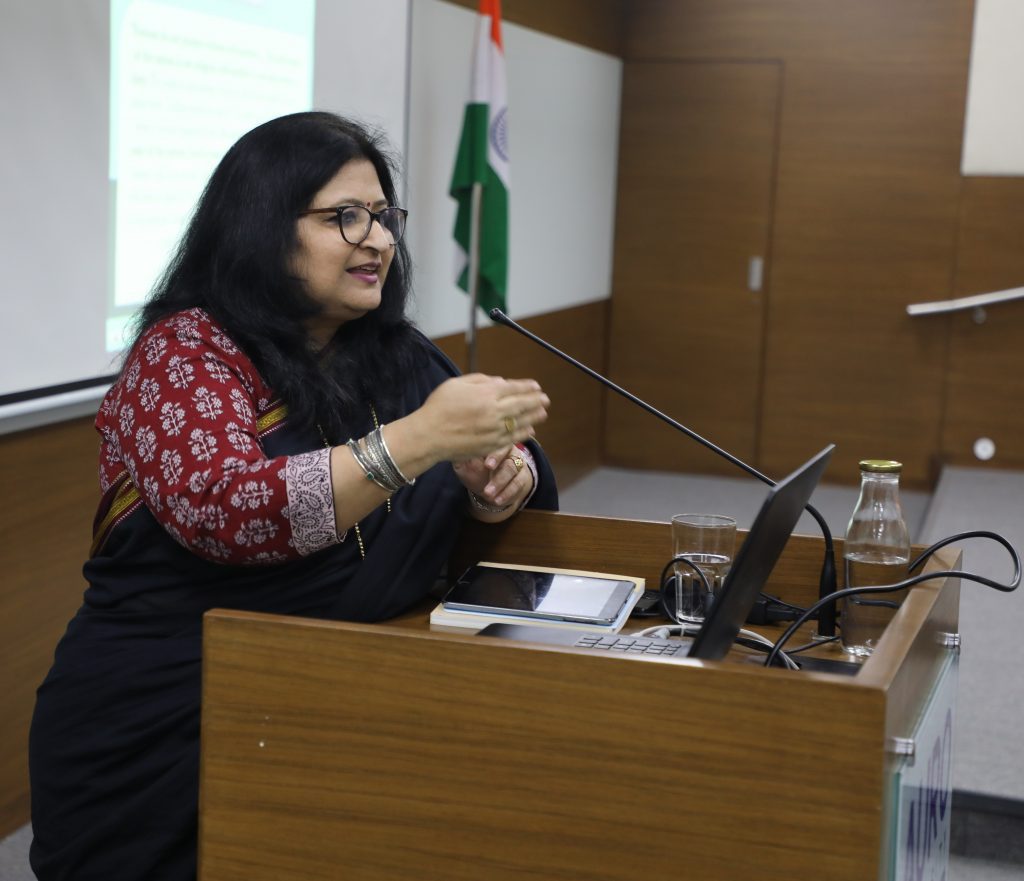
Some time was also spent on describing the bomb blast for which Sri Aurobindo was accused and sent to prison in 1908. It was pointed out that the one year period in jail was a deeply transformative experience for Sri Aurobindo. The faculty present among the audience were encouraged to ensure that all students on campus were shown the documentary ‘The Transformation’ produced by Sri Aurobindo Society documenting this period of 1908-1909 in Sri Aurobindo’s life.
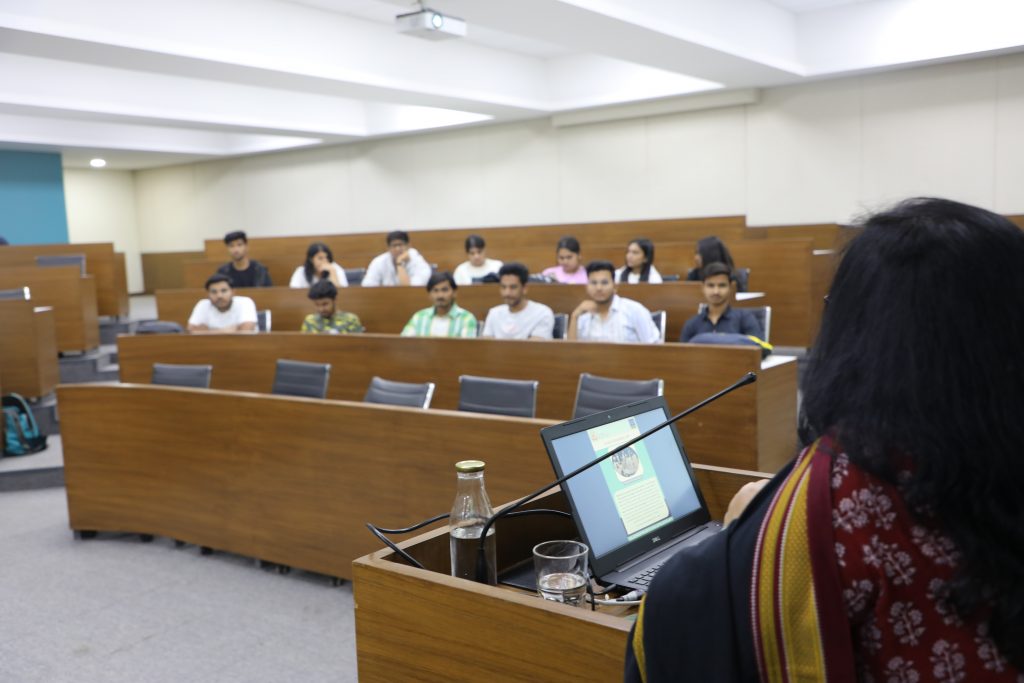
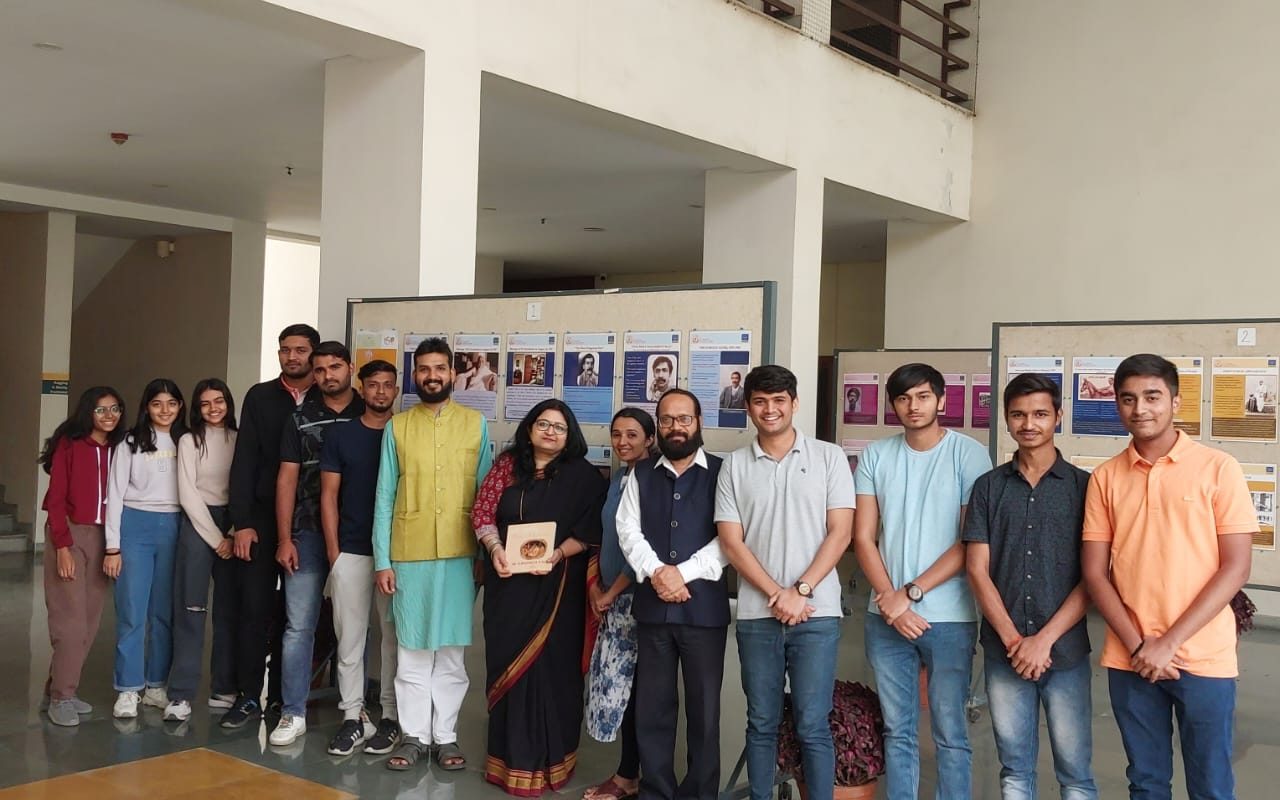
During her presentation Dr. Mehra emphasised that Sri Aurobindo’s revolutionary work in India’s freedom movement was guided by his deeper vision for India’s future and her destined work as a free and independent nation toward the betterment of the world and humanity. At the end, a 9-minute video on Sri Aurobindo’s poem ‘Hymn to Durga’ was shown; participants were asked to absorb the poem in silence.
